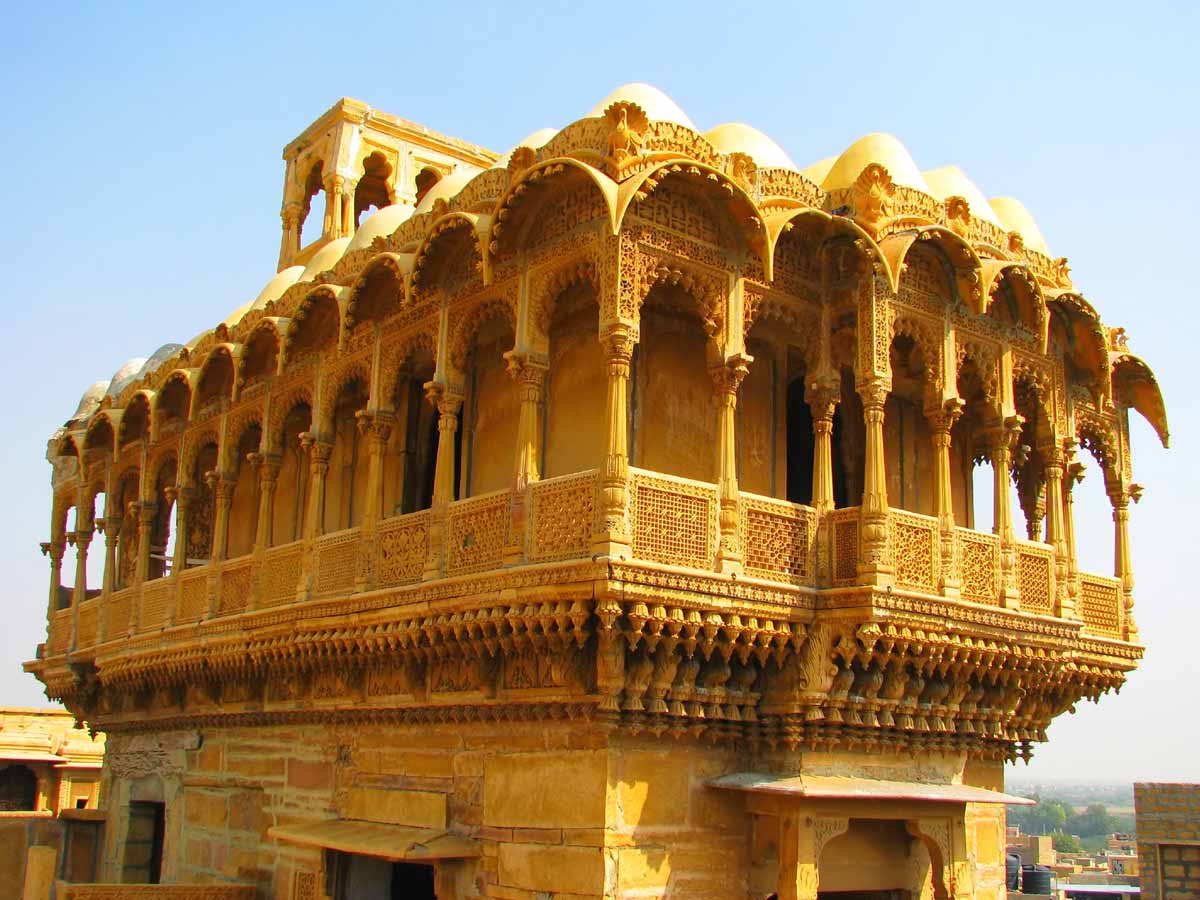Salim Singh ki Haveli is a beautiful edifice at the heart of the city Jaisalmer. It is one of the major tourist attractions built over the remains of an older haveli in the late 19th century and commissioned by Salim Singh, the then prime minister of the Kingdom. It also holds another beautiful name - Jahaz Mahal as the front facet of the Haveli resembles a ship stern. Created with strong iron rods unlike the ones made of cement and mortar; the mansion is famous for its architectural elegance.
The Haveli is almost 300 years old adorning a beautiful arched roof in the shape of a peacock. Famous for its distinctive architecture, the mansion has 38 gracefully carved balconies surmounted with pale-blue cupolas, and all have distinct designs for themselves. The gateway is guarded by two stone carved elephants with the interior walls covered in imperial paintings. Salim Singh ki Haveli is constructed on the remains of the old Haveli which was built in the late 17th century. The Haveli also houses a beautiful Moti Mahal where dances were held to entertain the aristocrats and royal courtiers. This piece of sheer elegance was later occupied by the most influential Mehta family of Jaisalmer.

History of Salim Singh ki Haveli
The splendid 300 years old Salim Singh ki Haveli was built by the erstwhile Prime Minister of Jaisalmer- Salim Singh Mehta. Constructed in 1815, the haveli was built on the land of the older haveli standing on the same grounds which was occupied by the Mehtas themselves. Unlike the usual buildings constructed with cement and mortar, this one was constructed by joining stones with the help of strong rods.
Architecture of Salim Singh ki Haveli
Boasting of marvellous architectural patterns and designs, Salim Singh ki haveli is adorned by a beautiful blue cupola roof in the central segment. The central axis of the building is shaped like a giant ship; it is also believed that the structure of the haveli was inspired by a dancing peacock. For the same reason, the monument is also known as ‘Jahazmahal’ by the locals. The structure is tapering for the first two floors and then gradually branches out to pave way for the balconies. Dotted with a number of rooms, frescoes, pillars and courtyards, the USP of the Haveli is its 38 ‘jharokas’ i.e. balconies which are all different from each other. Flanking the magnificent entrance are two life sized replicas of mighty elephants which is also considered a symbol of high rank in Rajasthan.
In addition to that, the Haveli boasts of chiselled window screen, bracketed walls- all replete with beautiful elaborate carvings. Other than wide stone inlays and charming paintings adorning the panels, there are also shelved walls which are not just unique in nature but are also an example of excellent craftsmanship of the time. The latticed murals, wall paintings and half- timbered paintings are all reminders of the flamboyant ancient time and stand strong as a true testimony to the bygone era. It is also believed that originally the Haveli was built upto five storeys but the magnificent structure invited the envy of the king and so on his orders, two floors were demolished. The monuments still continues to have five floors and is one of the architectural wonders of Jaisalmer.
Jaisalmer tourism is one of the best known in the state of Rajasthan as it is full of hospitality. Jaysalmar (or Jaisalmer) is a nicknamed as ‘The Sun City’ and ‘The Golden City’ for it’s bright, hot days and golden colored sand. Alike other Rajasthani cities, Jaisalmer tour will take foreigners towards forts, and other architectural monuments and there are lots of Jaisalmer tourist places to visit in the winters.